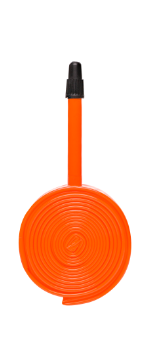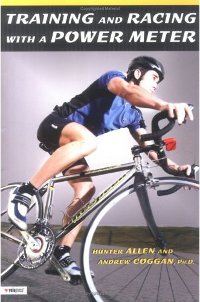There have been a few examples of electric pumps for bike tyres on the market over the last few years. The first I was aware of was the Fumpa Pump, produced in Australia. I have the original model, and the nano Fumpa. I've also bought a Cycplus A2 Pro. These devices offer some advantages and some disadvantages for the cyclist. So in order of purchase, here are my opinions.
 Over the last few years, a new material for inner tubes has surfaced - TPU or thermoplastic polyurethane. The first brand I noticed was Tubolito, though there are several available now.
Over the last few years, a new material for inner tubes has surfaced - TPU or thermoplastic polyurethane. The first brand I noticed was Tubolito, though there are several available now.
Since late last summer, I’ve been trying Tubolito road inner tubes on my TT bikes and on my summer bike. They seem very light, and surprisingly air tight compared to latex tubes. I’ve only used road bike tubes, which come in a couple of weight variants and valve stem length. The two weight variants are the standard Road tube (coming in at a quoted 38-40g per 18-30mm tube) and the S-Road tube (coming in at 23g per 18-28mm tube). The S-Road tubes are for disc brake wheels only.
So are these fancy and expensive TPU tubes better than the alternatives?
Hed H3 wheels are probably Team Grumpy’s go-to wheel - they are pretty close to being indestructable (but not invulnerable) - they aren’t likely to go out of true as there aren’t any spokes to break or lose tension.
In use, I’ve always found them to handle well except in the windiest of conditions (see for example the 2018 edition of the Duo Normand when I ended up using a regular spoked wheel). In comparison to very deep rimmed spoked wheels, they seem to be more of an all-rounder aero wheel for time trialling.
Grumpy Bob is aware he said in the Team Grumpy blog that he'd not fork out for new aero bars solely to make his bike UCI-legal. However, a week or so ago he decided to change his mind, and chose some USE Tulas (see picture). The Tulas were designed to be UCI compliant.
I've posted a few times over at Flies and Bikes on my modifications to my set up of the Cervelo P3 (most recently on my home brew eTap wiring). The recent mods over the last few months include:
- Fitting a secondhand pair of Aduro tri-bars with the high arm pad extensions
- A complex rewiring of the 11-speed (i.e. non-AXS) SRAM Red eTap gearing
- Replacing the inner tubes with Tubolito PFU tubes
- Sorting out the computer mount to accept a front light
- Replaced the ageing big chainring.
I've been meaning to take the P3 out for a test ride to make sure all is in order, and with my first event of the 2024 season fast approaching (the Port Talbot Wheelers 2-up 25) I decided to do so this morning.
As I've mentioned a few weeks back, I was the happy recipient of an excellent half century birthday present, in the shape of a Cervelo P3 frame and forks. I finally had the opportunity to ride it in anger a couple of days ago in the NBRC New Year's Day 10 mile time trial (reports at Flies&Bikes and at the NBRC website). How did it work out? Well first off, here's the specifications as assembled:
In part 2, I will reveal how my time trial bikes fare relative to the somewhat bizarre UCI bike regulations.
Not strictly Bike Tech, but I am evaluating a Hover X1 selfie drone in the role of DuoCam3.
This video uses the Dolly Track mode at 1m altitude as I walk through the woods.
 Training and Racing with a Power Meter
Training and Racing with a Power Meter
H. Allen and A. Coggan
Pub Velopress 2006
I have been using heart rate monitors for cycle training in an effective manner over the last decade. For a few years prior to that, my usage of HRMs just consisted of looking at the heart rate. What induced my HRM-based training to really take off and lead to improved time trialling was using Pete Read's Black Book (aka The Annual Manual), which delivers a programme of turbo training sessions arranged in monthly progression. Inherent in that programme is the need to for the cyclist to know what his or her maximum heart rate is, and from this to deduce five levels (0-4). This is actually quite hard to do - it seems to me that it does take quite a bit of experience to really appreciate how hard an effort can be sustained.
Recently I bought a Polar CS600X bike computer with the Polar Power meter attachment. This isn't the kind of kit I'd like to fit to a bike that will be used in the hurly burly of a time trial environment - I can't help feeling that the exposed cables would be quite vulnerable when heaving the bike in and out of car boots for example. It's also not suitable for moving between bikes, as installation, while not particularly difficult, is quite time-consuming. I chose to install the kit on the bike I keep mounted on the turbo trainer. This is the set up that I do just about all of my "real" training - the kind of training sessions which I monitor carefully using the HRM. Having now played around with the kit for a few months, I thought I'd try and get a bit more background understanding of the kinds of data analysis that power metering enables, and to take things beyond the "looking at the numbers" phase.
Introduction
The UCI have what could quite charitably be described as a luddite approach to bicycle design. Witness for example their responses to Graeme Obree's innovations, which ultimately culminated in the rejection of post-Merckx hour records in favour of the "athlete's hour" record. As an aside, Steven Berkoff does an excellent job of portraying an international commissaire in "Flying Scotsman".
